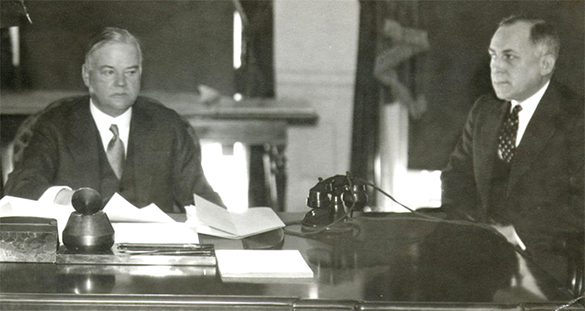| << Chapter < Page | Chapter >> Page > |
Holding true to his belief in individualism, Hoover saw little need for significant civil rights legislation during his presidency, including any overtures from the NAACP to endorse federal anti-lynching legislation. He felt African Americans would benefit more from education and assimilation than from federal legislation or programs; yet he failed to recognize that, at this time in history, federal legislation and programs were required to ensure equal opportunities.
Hoover did give special attention to the improvement of Native American conditions, beginning with his selection of Charles Curtis as his vice-presidential running mate in the 1928 election. Curtis, of the Kaw Tribe, became the country’s first Native American to hold so high an elected office. Hoover subsequently appointed Charles Rhoads as the new commissioner of the Bureau of Indian Affairs and advocated, with Rhoads’ assistance, for Native American self-sufficiency and full assimilation as Americans under the Indian Citizenship Act of 1924. During Hoover’s presidency, federal expenditures for Native American schools and health care doubled.
Cartoons, especially political cartoons, provide a window into the frustrations and worries of an age. Browse the political cartoons at The Changing Face of Herbert Hoover to better understand the historical context of Herbert Hoover’s presidency.
Herbert Hoover’s presidency, embarked upon with much promise following his election in November 1928, produced a legacy of mixed reactions. Some Americans blamed him for all of the economic and social woes from which they suffered for the next decade; all blamed him for simply not responding to their needs. As contemporary commentator and actor Will Rogers said at the time, “If an American was lucky enough to find an apple to eat in the Depression and bit into it only to find a worm, they would blame Hoover for the worm.” Likewise, subsequent public opinion polls of presidential popularity, as well as polls of professional historians, routinely rate Hoover in the bottom seven of all U.S. presidents in terms of overall success.
However, Hoover the president was a product of his time. Americans sought a president in 1928 who would continue the policies of normalcy with which many associated the prosperity they enjoyed. They wanted a president who would forego government interference and allow industrial capitalism to grow unfettered. Hoover, from his days as the secretary of commerce, was the ideal candidate. In fact, he was too ideal when the Great Depression actually hit. Holding steadfast to his philosophy of “American individualism,” Hoover proved largely incapable of shifting into economic crisis mode when Americans came to realize that prosperity could not last forever. Desperate to help, but unwilling to compromise on his philosophy, Hoover could not manage a comprehensive solution to the worldwide depression that few foresaw. Only when reelection was less than a year away did a reluctant Hoover initiate significant policies, but even then, they did not provide direct relief. By the start of 1932, unemployment hovered near 25 percent, and thousands of banks and factories were closing their doors. Combined with Hoover’s ill-timed response to the Bonus Army crisis, his political fate was sealed. Americans would look to the next president for a solution. “Democracy is a harsh employer,” Hoover concluded, as he awaited all but certain defeat in the November election of 1932 ( [link] ).

In Hoover, Americans got the president they had wanted, at least at first. He was third in a line of free-market Republican presidents, elected to continue the policies that had served the economy so well. But when the stock market crashed in 1929, and the underlying weaknesses in the economy came to the fore, Hoover did not act with clear intentionality and speed. His record as a president will likely always bear the taint of his unwillingness to push through substantial government aid, but, despite that failing, his record is not without minor accomplishments. Hoover’s international policies, particularly in regard to Latin America, served the country well. And while his attitude toward civil rights mirrored his conviction that government intervention was a negative force, he did play a key role changing living conditions for Native Americans. In all, it was his—and the country’s—bad luck that his presidency ultimately required a very different philosophy than the one that had gotten him elected.

Notification Switch
Would you like to follow the 'U.s. history' conversation and receive update notifications?